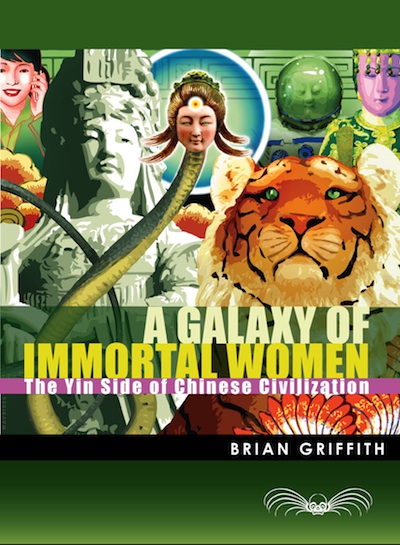
Will the Greatest Women’s Counterculture on Earth Please Stand Up
As in any culture, people are constantly deciding which traditions to keep, and which to forget. The simplistic Cultural Revolution answer was to just dump everything old. But most people want a more careful selection of what’s helpful or oppressive. And many feel that the traditions of village wise women are a lot more helpful that those of dominator warlords. Of course warlord-style power still has its admirers. As Julia Ching warned after the 1989 Tiananmen Square massacre, “In my opinion, Chinese history has been moving toward more rather than less concentration of power in the hands of the few.” Others such as Bo Yang (in The Ugly Chinaman and the Crisis of Chinese Culture) blamed the people as much as the rulers for China’s top-down system, accusing his countrymen of being petty, mean, filthy, muddleheaded, cruel, childish, racist, belligerent, pusillanimous, backward, duplicitous, paranoid, and sadistic (Parfitt, 2011, 225). And many women would agree. But when people choose which values they prefer for themselves, most will probably go for values of partnership and equality. As dissident leader Ren Wanding predicted, “The democracy movement of 1989 is the mid-wife for a new party … Perhaps the infant girl democracy may be killed in its cradle, but she will definitely be born again in the next storm” (Ching, 1990, 98–99). Many Westerners assumed that the “goddess of liberty” erected by students in Tiananmen Square was a copy of the American statue of liberty. But many Chinese people saw it as a socialist-realism-style sculpture of a female people’s hero, or an image of the goddess Guanyin (Weller, 1994, 195).
As in the past, a whole side of China’s evolving civilization is made by women, for women. Women’s traditions from a time before patriarchy are alive and growing. And as China exerts rising influence across the world, its counterculture of women’s values may bring a better balance, both in China and elsewhere. Women’s traditions of bodily and spiritual health, harmony with nature, peace of mind, compassion, and freedom of spirit are something the world needs. After working for decades in hyper-developing Taiwan, a Jesuit father named Louis Guthheinz reflected that the driving passions of the modern world—of empires, maximized growth, “this ultimate wanting to control everything” was so yang. And the whole world needed more balance with yin (Ching and Küng, 1989, 269–270). Western practitioners of Daoism like Michael Winn felt they were doing something about that:
"Neidan [or Inner Alchemy] opens the door to understanding exactly how the human soul, like the brain, is binary in nature. We are divided into yin-yang aspects at many different levels of the body and psyche, polarities often in conflict. The purpose of internal alchemy is to speed up the integration of the warring halves of our soul as part of human evolution. (2009, 199)"
In Micheal Saso’s opinion, the blend of popular Chinese religions offered a balanced message to the world: “The person who is filled with respect and benevolence for others and compassion for all living things, and who lives in close harmony with nature, lives long and is filled with inner peace and blessing” (Saso, 1995, 1). Or, as Livia Kohn explains of the Daoist Eight Immortals, “Accepting life and death as a single flow, they take neither seriously and make the best of all they meet. Their happy attitude, their playful way of being, is characteristic of the popular image of the immortal today” (Kohn, 1993, 281). At least that’s one version of Chinese tradition, which many Westerners find increasingly attractive.
My sentimental favorite example of positive influence is from Macau, where the Portuguese government offered the city a farewell present in 1997. It erected a 20-meter-high statue of Guanyin overlooking the harbor. But the artist, Cristina Leiria, clearly melded the goddesses of China and Portugal into one figure. It was both the Virgin Mary and Guanyin at the same time, symbolizing a fusion of the best and most beautiful from both the East and the West (Palmer, et al., 2009, xi–xx). Here, I suspect, is an early sign of a coming planetary religion, in which no tradition, authority, or sex prevails, but all things beautiful and good share the world’s admiration.
